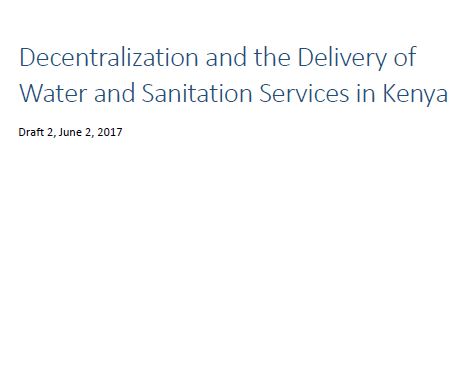Decentralization and the Delivery of Water and Sanitation Services in Kenya
Over the last two decades, Kenya’s water and local government institutions have evolved in two main phases. Water sector reforms in the early 2000s led to the establishment of nationally-owned regional asset development and holding companies for water services, as well as local-level, commercially-oriented operating companies for water supply in cities and towns (notionally owned by the local government). Rural provision was overseen by the deconcentrated District Water Offices, under national government auspices. Constitutional reforms following the adoption of a new quasi-federal Constitution in 2010 led to the establishment of devolved county governments with responsibility for water supply and sanitation in 2013. The introduction of a new Constitution in Kenya provides a rare opportunity to compare two different approaches to decentralization in the same country. Given the changing intergovernmental context, how well have these two different approaches — involving different forms of decentralization for the provision of water and sanitation services — served ordinary Kenyans, particularly the poor? Has one approach to decentralization resulted in better outcomes than the other? The country continues to pursue its new, devolved government structure. What are the binding constraints to improving and sustaining reliable water and sanitation services in Kenya in the context of decentralized provision under the new constitutional arrangements? The limitation to the study is that it is still too early to assess the effectiveness of decentralization undertaken as a result of and in response to the constitutional reforms. This case study on Kenya is part of an international comparative study on the decentralized provision of water and sanitation services.
